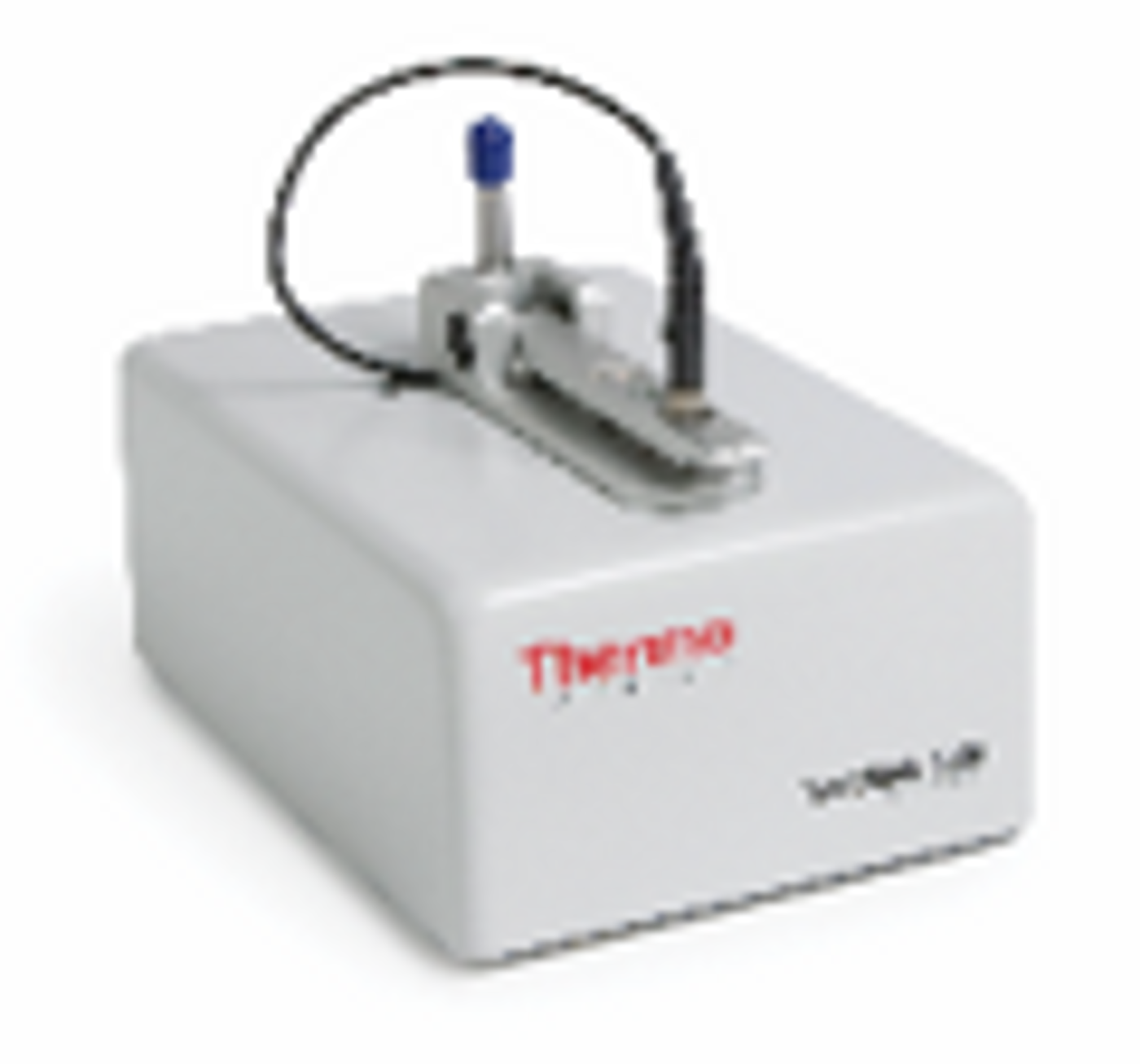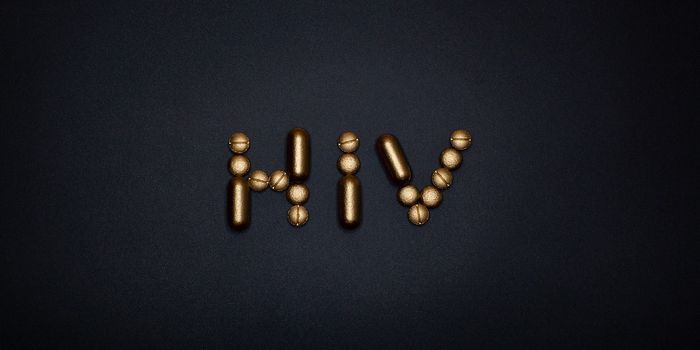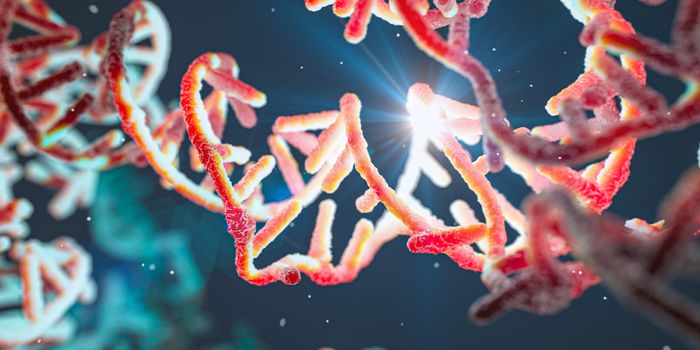Thermo Fisher Scientific Inc. (NYSE: TMO) is the world leader in serving science, with annual revenue of approximately $40 billion. Our Mission is to enable our customers to make the world healthier, cleaner and safer. Whether our customers are accelerating life sciences research, solving complex analytical challenges, increasing productivity in...
7 Considerations When Purchasing a Microvolume UV-Vis Spectrophotometer
It all started with the Thermo Scientific™ NanoDrop™ 1000 as the first microvolume UV-Vis spectrophotometer, and now they're everywhere. Here’s some practical advice for choosing a microvolume UV-Vis spectrophotometer that's right for your lab.
1.) Detection limits
A wide dynamic range means you spend less time measuring samples and more time on experiments. Researchers find microvolume UV-Vis spectrophotometers useful in molecular biology labs due to their minimal volume requirements and their ability to measure highly concentrated samples without dilution. These benefits result from using light pathlengths shorter, sometimes much shorter, than traditional cuvette-based spectrophotometers.
Recall the Beer-Lambert equation can be rearranged to calculate sample concentration using the formula below where ɛ is the wavelength-specific extinction coefficient and l is the light pathlength in cm.
There is an inverse relationship between concentration and light pathlength. As the light pathlength decreases, the concentration, which can be accurately quantified, increases.
Wide detection limits are preferred because they minimize sample preparation time in two ways 1) there is no need to dilute samples prior to measuring the absorbance and 2) the researcher does not have to estimate sample concentration ahead of time to properly dilute it. Dilution is generally not beneficial as technical errors can increase the error in the final measurement, sample is wasted for the measurement, and unnecessary time is spent on sample preparation.
Question to ask: How reliable is the underlying technology used to achieve wide detection limits?
2) Instrument connectivity, flexibility, and usability
Laboratory needs change and people have different preferences. Instrument flexibility lets users customize their experience. Each laboratory configuration is as unique as the people working in it. Many labs house various instruments and reagents across benches, cabinets, and drawers. In these situations, an instrument which can be controlled using on-board software is ideal. Other spaces don’t require users to be concerned about footprint, or researchers prefer to use computers.
When considering a new instrument, you want one that is versatile - one that will adapt with the laboratory in which it’s located and provide users with an experience that suits their needs and preferences.
Question to ask: Does the instrument support multiple user scenarios and accessibility needs (e.g., color blind friendly)?
3) Data Integrity
Maintaining accurate data records is important for all laboratories, not just for those that comply with 21 CFR Part 11. Beyond compliance with regulations, the concept of data integrity is relevant when data-driven decisions are made. Simply put, integrity of data requires that records are protected from modification by unauthorized individuals and changes to the records are captured in a traceable system. These practices need to be implemented across the lifetime of a piece of datum – from creation, to processing, reviewing, reporting, and ultimately preservation.
The US FDA Code of Federal Regulations Title 21 Part 11 provides guidance on systems that should be in place to ensure data integrity. Such guidance calls for limited user account access, electronic signatures, and audit trails. In addition to labs regulated by the FDA, these systems can help all groups that make data-driven decisions ensure their data is free from error and manipulation.
Question to ask: Does the software allow me to ensure the integrity of my data?
4) Contaminant assessment and specificity
Sample concentration and sample purity are the two most important considerations; both should be measured quantitatively by the instrument system before downstream activities begin. It is standard for a life science focused UV-Vis spectrophotometer to calculate A260/A280 and A260/A230 purity ratios. By comparing the ratio values for a given sample to the expected ranges for pure samples, one can qualitatively assess the purity of the sample. For example, pure DNA generally has an A260/A280 value of ~ 1.8 and pure RNA a value of ~ 2.0.
Sample purity is the second-most important consideration of a sample, the first being concentration. Quality downstream assay results, such as qPCR, rely in part on quality starting material. Contamination of a nucleic acid sample may falsely elevate the reported concentration or impede subsequent reactions.
Researchers measure samples to determine whether there are offending contaminants in the preparation and so they use the correct amount in their next assay. One limitation of purity ratios is that contaminant concentrations, especially for protein, need to be relatively high before the purity ratio falls out of range. A few modern UV-Vis spectrophotometers employ advanced spectral processing algorithms that not only indicate when a sample is impure, but also identify the offending contaminant and provide a corrected sample concentration.
Question to ask: Does the instrument software provide deep enough insight into sample composition?
5) Serviceability and maintenance
Ideally a spectrophotometer allows the user to assess instrument performance for GLP or data integrity regulations without requiring routine calibration. A lab’s microvolume UV-Vis spectrophotometer is typically used by several people throughout the day. It needs to measure the sample quickly and accurately and without requiring constant maintenance or service. Because the results from these instruments are critical to future success, users should be able to assess how the instrument is performing with internal or external standards. If service is needed in the form of a repair or preventive maintenance, it should be available in a timely manner to limit downtime in the lab.
Question to ask: How easy is it to validate my instrument, and how quickly can service be rendered to the instrument?
6) Company history & reputation
Choosing a name that has been proven with many users over time means an instrument is more likely meet your expectations and be supported for years to come. You want to be sure that a new instrument is going to work and do its job well. In addition, a long-term manufacturer can generally be counted on to provide support for spectrophotometers throughout the many years of ownership.
Reputation and presence offer another opportunity for users to gain confidence in their purchase. Instruments with a large user base mean the manufacturer already understands the concerns of users, and likely is working constantly to address those concerns via software updates and advanced generation systems. You want to know that others in your field are using the same piece of equipment and it successfully meets their needs. Using something other than the standard in a field can call your work into question. The number of citations attributed to an instrument is just one method used to assess how many researchers rely on it.
Question to ask: Does the instrument manufacturer have a long history of delighting users? Has the instrument been proven by other scientists?
7) Customer support
System downtime impacts business revenue directly not to mention lab productivity and morale, so ask ahead of time about support availability and response times in your area. Researchers rely on quality results from the same microvolume UV-Vis spectrophotometer for many years. Inevitably questions will arise about the data generated, how to maintain the instrument, optimizing the instrument for custom use, and servicing the instrument. It’s important for a customer support and technical support team to not only understand the end-user perspective but to also know the science behind the experiment, how the software and hardware integrate, and the urgency with which questions need to be addressed. Providing an extensive online resource area that is available 24/7 expands support opportunities even further. These qualities will get the researcher back up-and-running in the shortest time possible.
Question to ask: Does the technical support team have the scientific and instrumentation background to understand and address questions and issues quickly?









